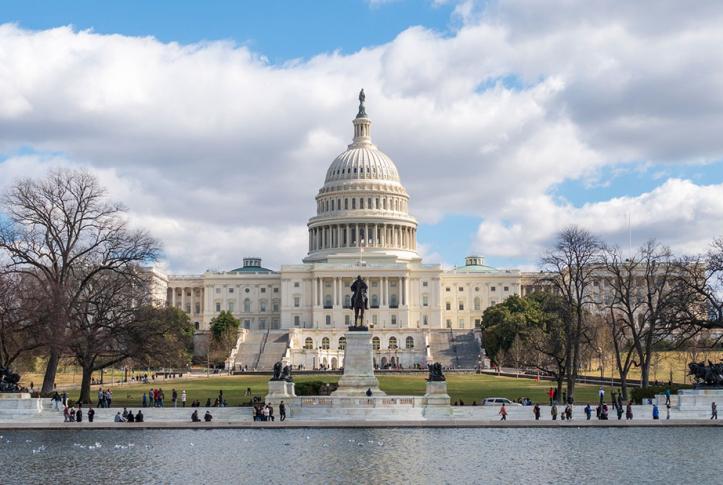As the impeachment trial has concluded with the acquittal of President Trump, Congress is now returning to some sense of normalcy. On the health care front, policymakers will need to secure a deal relatively quickly on top-priority issues like prescription drug pricing and surprise medical billing.
The apparent deadline for final legislation in both regards is the May 22 expiration date of funding for several public health programs (e.g., community health centers), which many are eyeing as the last real opportunity for meaningful reform this year. Many doubt whether Congress will produce much after that date because of compressed schedules to accommodate party conventions and an extended recess in October. However, health care is in the forefront of voters’ minds.
Policymakers — especially congressional representatives facing tough reelections — are therefore caught between doing something and doing enough on health care.
Transparency and Patient Protections
The issue of transparency has support from both Congress and the Trump administration and will likely remain a priority for the 2020 policymaking cycle.
For Congress, this means a continued focus on surprise medical billing. Pressure is mounting on House health committee leaders to quickly rally behind a single solution for settling payment disputes between out-of-network providers and insurers — the most divisive issue of the debate.
The House Energy and Commerce (E&C) Committee and Senate Health, Education, Labor and Pensions (HELP) Committee made significant progress on a deal to stop surprise medical bills, but hit a wall when the House Ways and Means (W&M) Committee introduced a competing plan. E&C and HELP are pushing for a hybrid proposal that would establish a benchmark payment based on the median in-network rate and allow arbitration for services when the median in-network rate exceeds $750. In contrast, W&M is promoting arbitration, with full legislative text expected as soon as today ahead of a slated February 12 committee markup.
Complicating matters even more, the House Committee on Education and Labor (E&L) plans to introduce its own bill before its markup on February 11, though it’s unclear how the committee intends to address the issue. Although unlikely at this point, House Democratic leadership hopes to wrap up surprise medical billing by February 13 to leave enough time to secure a drug pricing deal.
On the regulatory front, we are awaiting final rules from the Centers for Medicare and Medicaid Services (CMS) and the Office of the National Coordinator for Health Information Technology (ONC) on health care data interoperability. Originally proposed in early 2019, the final rules could be released this quarter; both are under review at the White House Office of Management and Budget (OMB) (details here and here). Additionally, the administration will likely finalize its health insurance transparency rule, even while it defends a parallel measure aimed at hospitals in court. The two rules would compel hospitals and insurers to make health care prices and out-of-pocket cost estimates more accessible to patients.
Drug Pricing
House Speaker Nancy Pelosi (D–Calif.) has shown appetite to negotiate a drug pricing deal with the President. However, their tumultuous relationship on display at the State of the Union (SOTU) does not bode well for bipartisanship. Moreover, it remains unclear whether Democrats — who chanted “H.R. 3” in response to President Trump’s request for a drug pricing bill at the SOTU — are willing to abandon their push for direct drug price negotiation to make way for bipartisan legislation.
On the Senate side, Majority Leader Mitch McConnell (R–Ky.) continues to give the Prescription Drug Pricing Reduction Act (S. 2543), advanced by Finance Committee leaders, the cold shoulder. The revised version of the Senate bill — which continues to receive criticism from Republicans — includes provisions that lower the cost burden on drug manufacturers from what senators originally proposed in the first version of the bill. Specifically, it would require drug manufacturers to provide a new discount of 7 percent in the initial coverage phase while reducing the originally proposed manufacturer discount in the catastrophic phase to 14 percent, down from 20 percent. Lawmakers state this would spread the cost across the entire Medicare Part D benefit and lessen the financial impact on smaller manufacturers.
However, Finance Committee leaders retained provisions that would require drug manufacturers to pay a rebate to Medicare for the amount that their Part B or D drugs increase above the rate of inflation. Many Republicans decry this as price control. President Trump offered his support for the bipartisan legislation during his SOTU remarks, which could potentially push Senate Republicans to back it.
Although the Trump administration began 2019 by unveiling multiple avenues to lower prescription drug pricing, the landscape looks different in 2020. After the implosion of several key drug pricing initiatives — e.g., the “rebate rule,” which would eliminate drug manufacturer rebates paid to health plans and pharmacy benefit managers under Medicare and Medicaid, and new restrictions on direct-to-consumer drug advertisements — one of the final remaining drug pricing reforms is the pending International Pricing Index (IPI) model. The long-delayed IPI proposal, which would tie Medicare Part B physician-administered drug prices to international sales prices, is currently targeted for release in the first quarter of 2020, although it has sat at OMB awaiting review since June 2019.
The administration’s other attempt to curb drug pricing would allow the importation of pharmaceutical drugs from Canada. This was proposed in December 2019 and awaits finalization in 2020.
Health System Reform
After rejecting a request to expedite consideration of an appeal of the Fifth Circuit decision that found the Affordable Care Act (ACA) unconstitutional the Supreme Court will consider whether to take up Texas v. United States on February 21, leaving the possibility that the fate of the ACA may be settled before the 2020 election. In the interim, the administration is planning as early as this month to finalize a new rule that would reverse ACA section 1557 protections for transgender patients against discrimination.
In addition, there are regulatory items pending, including efforts to remove legal barriers to coordinated care through the creation of new safe harbors under the Federal Anti-Kickback Statute and Stark Law. These changes could come in the first half of 2020, though target dates for their release are not yet specified.
Outlook
The likelihood of major congressional action on health care in 2020 is slim, though not impossible. The impeachment trial and upcoming presidential election may lessen the chance that Congress can coalesce around a single solution for both drug pricing and surprise medical billing. However, public pressure to act may be enough to prompt action.
The same holds true for the administration. Timely action on regulatory priorities could serve as important fodder for President Trump on the campaign trail, though any aftereffects of the impeachment trial have yet to be seen.
It is unclear whether we’ll see meaningful health care reform in 2020. However, what is clear is that while policymakers continue to deliberate on a unified path forward, the problems will persist.



